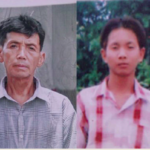By Lawi Weng / The Irrawaddy | May 9, 2018
A court in Myitkyina, the capital of Kachin State, on Wednesday fined two ethnic Kachin youth leaders for organizing a protest to demand that authorities assist IDPs trapped by armed clashes in the state.
The two were charged with violating Article 19 of the Peaceful Assembly Law, local sources said.
They appeared at a police station in Myitkyina on Wednesday morning to hear charges relating to street protests and a sit-in at the town’s Manau grounds. The two were charged by Police Colonel Than Oo. The officer, who served as prosecutor in the case, told The Irrawaddy on Wednesday that the court later found the two to have violated the law. They confessed to having violated the law by failing to ask for permission to stage the protest, the officer said.
Article 19 violations are punishable by either a three-month prison sentence or a fine of 30,000 kyats, and the judge opted to fine them, he said.
Lum Zawng, a youth leader who was among the two charged, told The Irrawaddy on Wednesday evening after emerging from the court that he and his a co-defendants, Sut Seng Htoi had been ordered to pay 30,000 kyats each.
“Police told us we violated the Peaceful Assembly Law. We told them we staged a peaceful protest intended to help IDPs. But we take responsibility for our actions. We accept the court’s decision; that’s why we went there,” Lum Zawng said.
The two led 700 people in a street protest and later organized a daily sit-in protest the Manaw grounds. The protesters demanded the state and Union governments evacuate Kachin IDPs trapped in the jungle by fighting between the Myanmar military (or Tatmadaw) and the Kachin Independence Army.
Lum Zawng said his youth group was not aiming to stir up trouble in Myitkyina. His group held a peaceful protest asking the government to rescue the IDPs, he said.
“We did what we believed we had to do,” he said.
The Kachin youth protesters ended their sit-in under pressure from local authorities, but succeeded in getting the state and Union governments to negotiate the evacuation of a limited number of Kachin IDPs.
Many remain trapped in the jungle, however. The Kachin youth protesters have said they plan to adopt new protest tactics to keep the pressure on the government to help the IDPs.
Recently, two activists in Mandalay and four in Yangon were also charged under Article 19 after staging peaceful protests.
According to the UN, more than 10,000 people have fled their homes since the Tatmadaw launched a major military offensive on April 11. Of these, some 6,500 have reached Myitkyina and Tanai townships. Rights groups, the UN and other overseas organizations have issued statements of concern about human rights violations in Kachin, and reports continue to emerge of new IDPs having been forced to flee.
Fighting between the Tatmadaw and the KIA has eased in recent days, but the Myanmar Army continues to deploy fresh troops to areas formerly controlled by the KIA’s Brigade 2 in Tanai Township.
Local sources from Tanai and the KIA said 50 Tatmadaw trucks had driven from Myitkyina to Tanai, leading KIA leaders there to believe the Myanmar Army planned to continue its offensive and that fighting in Kachin would resume soon.
Seven years after a ceasefire agreement broke down in the region, the number of IDPs in Kachin is estimated at 150,000. Of the state’s 15 townships, 10 host IDP camps.
This article originally appeared on The Irrawaddy on May 9, 2018.

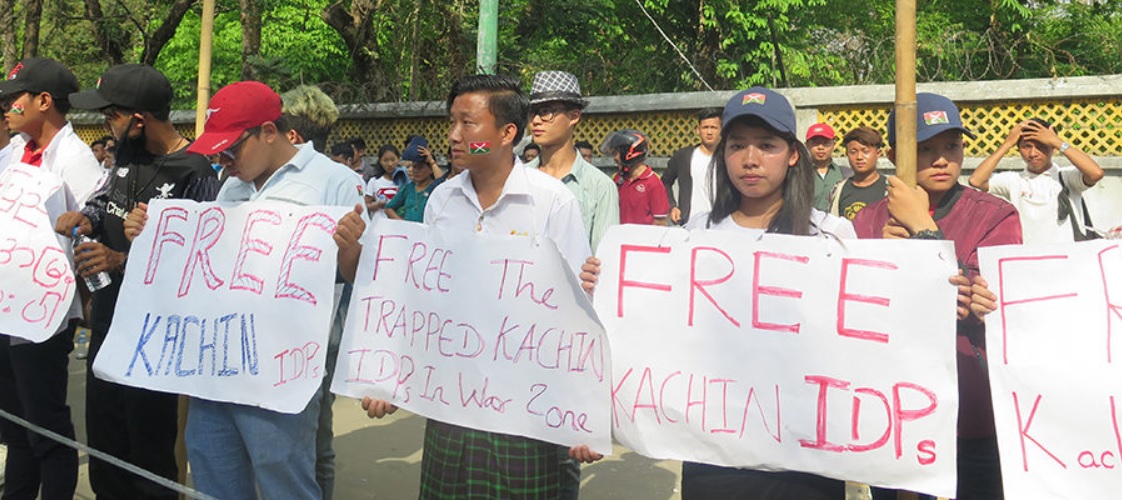
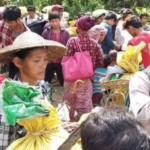
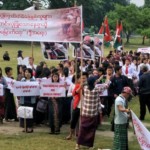
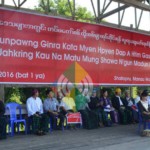
![‘Not Only Do They [Burma Army] Aim Their Weapons Against Civilians, They Also Rape the Women’: Ah Ze, General Secretary of AKYU — PART 1](https://www.burmalink.org/wp-content/uploads/2018/10/Ah-Ze-speaking-at-AKYU-anniversary-150x150.jpg)

